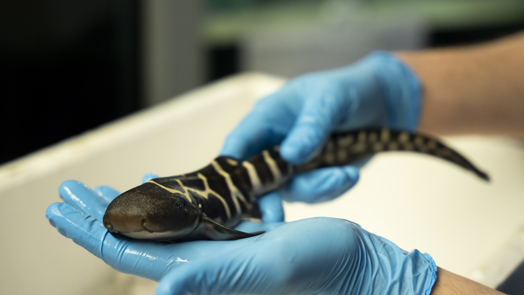
Species reintroduction is the release of a species into the wild. Animals that were born in zoos are released back into the wild (usually at a young age) under the supervision of a team of biologists on location in the field. We have reviewed several practical examples of successful reintroduction projects in this series of articles. We also explained that many threats need to be overcome before reintroduction projects can succeed. Sometimes, however, we can also use our knowledge and experience directly and indirectly—to restore existing coral reefs in the wild, for example. We do this by sharing our knowledge, experience and research on successful coral breeding with international experts. This time, we present several examples of how we are taking the lead in cooperation with some of the leading public aquaria worldwide.

On Tuesday, 27 May, aquarists at Burgers' Ocean publicly introduced a rare cartilaginous fish into t…
27 May 2025

The collection in the 'Little Ocean' — the basin on the left before the ray tunnel — needs replenish…
30 May 2024

Royal Burgers' Zoo successfully breeds egg-laying tropical shark species: DNA analysis has yet to re…
15 February 2024